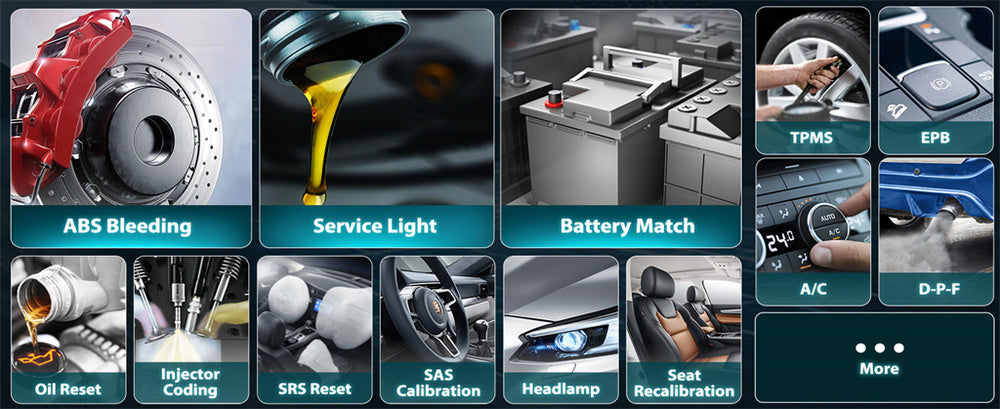In modern-day cars' complicated emission structures, the Fuel Tank Pressure (FTP) sensor plays a important role. It is responsible for tracking the pressure of fuel vapors in the gasoline tank, making sure that these vapors do not leak into the atmosphere, as a consequence supporting lessen pollution.
However, like any automobile additives, the FTP sensor can fail. Many car proprietors may not recognize its effect until they experience large issues with their vehicle.
This article will introduce the common signs of FTP sensor failure, help you recognize the hassle, and take the proper corrective measures to keep away from excessive repair fees while reducing your environmental footprint.
How the FTP Sensor Works: The Car’s "Breathing System"

Think of the FTP sensor as the "lungs" of your car. It continuously monitors the stress within the gasoline tank to ensure gasoline vapors aren't leaking. Working along the EVAP (Evaporative Emission Control) gadget, the FTP sensor helps regulate the float of gasoline vapors, preventing them from being released into the air, that could purpose pollution.
When the sensor detects peculiar stress levels inside the fuel tank, it sends the records to the car's Engine Control Unit (ECU), which adjusts the engine's conduct as a result. If the sensor fails, the auto starts showing quite a number unusual signs and symptoms.
Common Symptoms of FTP Sensor Failure
Check Engine Light (CEL) Illuminates
- The most obvious symptom of a failing FTP sensor is the Check Engine Light (CEL) coming on. This is frequently followed by means of mistakes codes inclusive of P0452 or P0453, indicating the sensor has detected too excessive or too low strain in the gas tank.
Rough or Unstable Idling
- When the FTP sensor fails, it is able to result in poor gas vapor stress control, inflicting the engine to idle roughly. Vehicle proprietors may also observe the engine running inconsistently or even stalling whilst the automobile is at a standstill.
Increased Fuel Consumption
- Since the FTP sensor is accountable for regulating fuel vapor pressure, a defective sensor might also reason the engine manage gadget to deliver extra gasoline than necessary, main to elevated fuel intake. If you note your automobile’s fuel performance declining, it is probably due to a failing FTP sensor.
Delayed Acceleration
- A failing FTP sensor can also have an effect on your vehicle's acceleration overall performance. Because of the imbalance in fuel control, the car may also show off a gradual acceleration reaction while pressing the gasoline pedal.
Difficult Starting or Stalling
- In extra excessive instances, FTP sensor failure could make it difficult to begin the engine, or the automobile might also all of sudden stall while using. This takes place while the sensor misreads strain, inflicting gas glide to become volatile.
Emission System Failures
- The FTP sensor now not handiest influences engine overall performance but immediately influences the emission system. A malfunctioning sensor can save you fuel vapors from being successfully processed, leading to immoderate emissions. This can result in the automobile failing emissions assessments and having a negative environmental impact.
Diagnosing the Issue: How to Check for FTP Sensor Problems
Diagnosing FTP sensor problems generally calls for an OBD-II diagnostic device, which reads car mistakes codes. By connecting to the vehicle's diagnostic port, you can fast decide if there are any FTP sensor-related hassle codes.
One first rate device for diagnosing FTP sensor issues is the Foxwell NT809 OBD-II Diagnostic Tool. This expert-grade scanner is prepared with advanced features, inclusive of stay data streaming and code analyzing and clearing for lots of vehicle models.
Whether you’re dealing with a P0452 (low pressure) or P0453 (high pressure) errors code, the Foxwell NT809 can provide particular blunders readings, making it less complicated to identify and troubleshoot FTP sensor-associated issues.
During analysis, technicians may also check the following:
- Error Codes: For example, P0452 (low pressure) or P0453 (high pressure).
- Electrical Connections: Inspecting whether or not the sensor’s wiring or connectors are free or worn.
- Physical Damage: Detaching the sensor to test for cracks or wear.
Solutions: How to Fix FTP Sensor Failure
Replacing the FTP Sensor
- The maximum common answer is to replace the faulty sensor. This typically entails casting off a part of the gasoline tank, disconnecting the old sensor, and putting in a new one. While not a specifically complicated repair, it does require a few information, specifically when coping with the gas tank for the duration of the manner.
Fixing Electrical Connection Issues
- If the sensor itself isn't the hassle, it is able to be due to electric connection issues. Check and restore the wiring and connectors to make certain there’s no unfastened connection inflicting the fault.
Resetting the Trouble Codes Using an OBD-II Tool
- After replacing or repairing the sensor, use an OBD-II device just like the Foxwell NT809 to reset the error codes and make sure the emission gadget is functioning successfully once more. The Foxwell NT809 now not most effective helps reset blunders codes however also provides comprehensive diagnostics and deep system evaluation, making it a precious tool for each DIYers and professionals.
Preventive Measures: How to Extend the Life of Your FTP Sensor
To avoid common FTP sensor screw ups, automobile proprietors have to take the subsequent preventive measures:
- Regularly conduct emission machine checks to make sure the FTP sensor is functioning correctly.
- Pay attention to fuel tank upkeep, warding off jogging the tank too low or permitting water to accumulate inside the tank, as those can have an effect on sensor overall performance.
- Perform recurring car protection, especially checking the electrical connections to save you failure due to circuit issues.
Conclusion: Early Detection to Prevent Costly Repairs
The FTP sensor is a vital factor for making sure proper car operation and lowering environmental pollution. Timely detection and restore of FTP sensor disasters can not only improve your vehicle's overall performance but also prevent high priced repair bills and make certain your car meets emission standards.
If you experience any of the signs referred to above, or if the Check Engine Light has illuminated, don’t delay—use expert diagnostic equipment like the Foxwell NT809 to verify the issue and take action to restore the sensor, ensuring your vehicle keeps to run effectively and environmentally responsibly.
FAQs
How to know if an FTP sensor is bad?
You can identify a faulty FTP sensor through symptoms such as a Check Engine Light, rough idling, poor acceleration, increased fuel consumption, or trouble starting your car. An OBD-II scanner like the Foxwell NT809 can confirm the issue by reading error codes like P0452 or P0453.
What are the symptoms of a bad fuel pressure sensor?
Common symptoms include erratic idling, difficulty starting, reduced fuel efficiency, sluggish acceleration, and emission system failures, often accompanied by a Check Engine Light.
Can you drive with a bad FTP sensor?
While technically possible, driving with a bad FTP sensor is not recommended. It can lead to poor engine performance, increased emissions, and potential damage to other components. Fixing the issue promptly will save costs and protect the environment.




Leave a comment
This site is protected by hCaptcha and the hCaptcha Privacy Policy and Terms of Service apply.